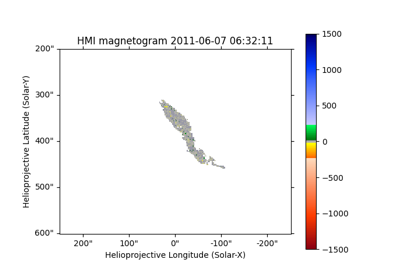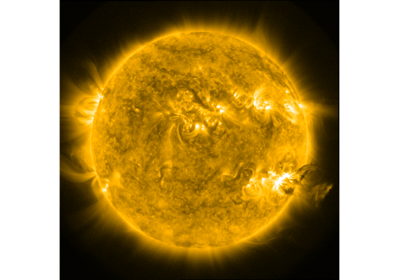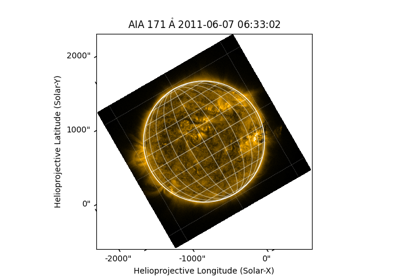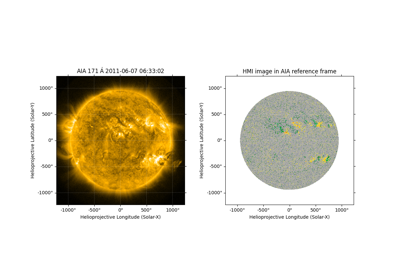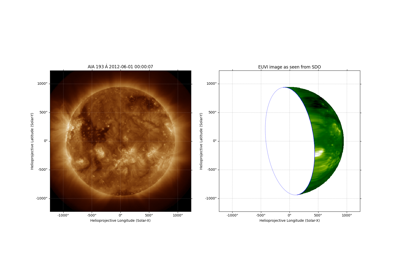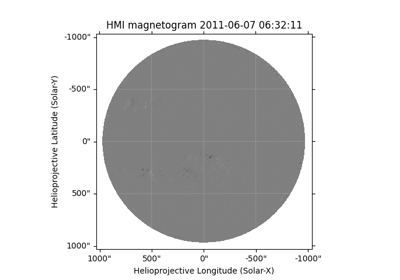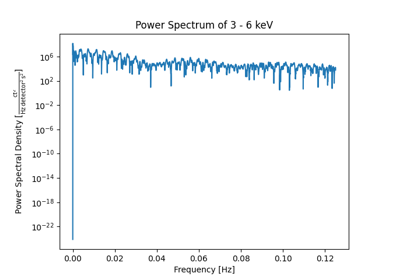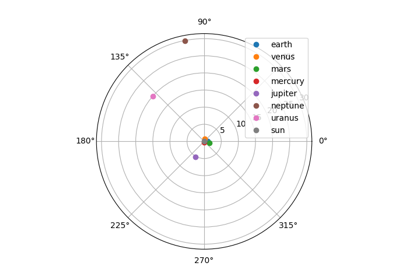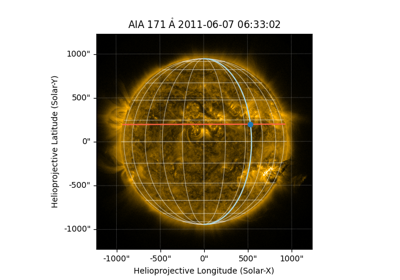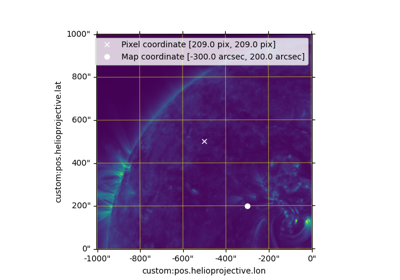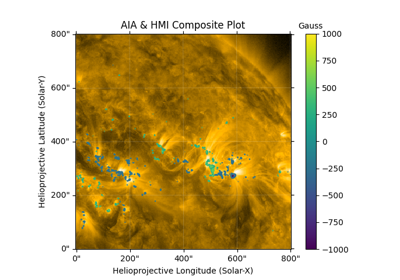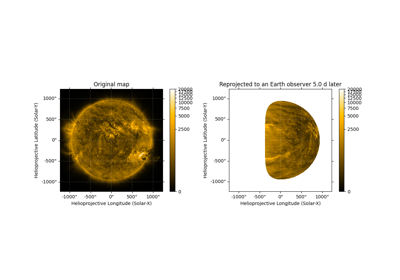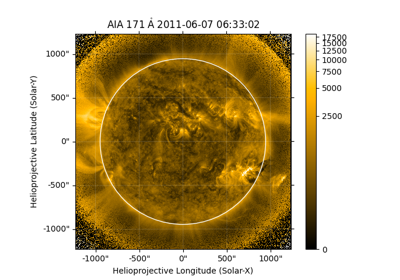Example Gallery#
The gallery contains examples of how to use sunpy. Each example is a short and self contained how-to guide for performing a specific task.
Sample data#
Some of these examples require the SunPy sample data, which are downloaded as needed via the module sunpy.data.sample.
If you want to download all of the sample data files in advance, call sunpy.data.sample.download_all().
Acquiring Data#
Examples of downloading solar data located on remote servers
Map#
Examples using Map with solar data

Segmenting a Map based on transformation of coordinates
Combining, Co-aligning, and Reprojecting Images#
Examples of combining, aligning, and reprojecting sunpy maps

Reprojecting to a Map Projection with a Custom Origin
Time Series#
Examples using TimeSeries

Creating a TimeSeries from GOES-XRS near real time data
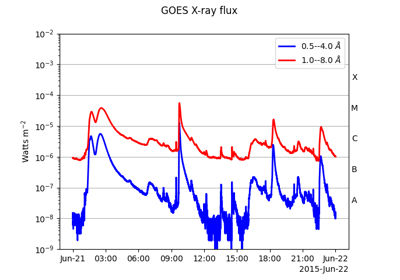
Retrieving and analyzing GOES X-Ray Sensor (XRS) data

Smoothing of timeSeries data using convolution filters
Coordinates, times, and units#
Examples of working with coordinate information, times, and scientific units

Converting between Helioprojective and AltAz Coordinate

Create a Helioprojective Map from observations in the RA-DEC coordinate system

Identifying stars in a STEREO/SECCHI COR2 coronagraph image

Obtaining a spacecraft trajectory from JPL Horizons

Setting the correct position for SOHO in a LASCO C3 Map
Plotting#
Examples of visualizing supported data types

Overplotting SRS active region locations on a magnetograms
Differential Rotation of the Sun#
Examples of accounting for differential rotation (i.e., the latitude-dependent rotation rate of the Sun) in the coordinates framework
Saving and Loading Data#
Examples of saving and loading data
Computer Vision Techniques#
Examples of using computer vision techniques to analyze solar data
Showcase#
Examples that use an advanced combination of capabilities in sunpy














